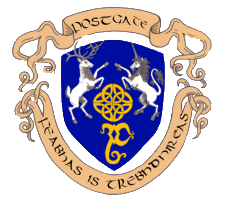Diamond Luckenbooth Pendant in 14 K Yellow, and Palladium Golds, Pendant only
Diamond luckenbooth pendant, designed and made by George Postgate. This pendant celebrates the Scottish tradition surrounding this unique Scottish form of jewelry.
Diamond luckenbooth pendant, Details:
The pendant features several small good quality natural diamonds, approximately 0.13 tcw. The pendant is 1 7/8 " X 1/2 " or / 45 X 13 mm. It was carved in wax and then in gold. It is an original design by George. This price does not include a chain. We have many link styles and most lengths just let us know what you would like and we will include a beautifully made chain for your pendant at a good price.
We make this pendant in a larger version as well. You may purchase the pendant in one solid type of gold or in rose, white or yellow gold. We can also set a stone between the hearts or leave it out as in the larger version shown here. https://postgatejewelers.com/product/scottish-luckenbooth-pendant-diamonds-14k/
A Brief History
The luckenbooth dates from the late sixteenth century. It originated as a pin that merchants who sold their goods out of locked wooden cases along the “Royal Mile” in Edinburgh had to wear. The pins confirmed that the merchant had purchased a license to sell their goods.
The first luckenbooth brooches were very small. A tradition developed in which the luckenbooth was given to a man’s sweetheart on their betrothal. It was also considered a lucky charm, that would protect its wearer against the evil eye. Other powers attributed to the luckenbooth was easing the pain of childbirth and ensuring a good supply of breast milk, when pinned to a woman’s petticoats near the left thigh. If pinned to a baby’s shawl, it will protect the child from being stolen by fairies.
During the 18th and 19th centuries the luckenbooth became larger and more elaborate often inscribed on the back with biblical quotes or the names or initials of the couple and the date of their wedding.
In the late 1800’s the intertwined hearts that form the lower half of the brooch came to resemble the letter M. Fleur de lis and thistles also became common elements. These became known as Mary’s Brooches or “Queen Mary’s Brooches.” This was because Mary Queen of Scots husband, Lord Darnley, had given her one.
Most contemporary luckenbooth brooches are in the form of two intertwined hearts topped with a crown. In Victorian times they were often set with garnets. Garnets were believed to have a positive influence on love and symbolized love, constancy, and friendship. The Victorian versions of the luckenbooth brooch were decorated with gems of different colors.
Scottish fur traders exchanged simple silver luckenbooths for furs with Native Americans who loved them long before there was a United States. Some of these brooches have been passed down for generations in those native American families!












Reviews
There are no reviews yet.